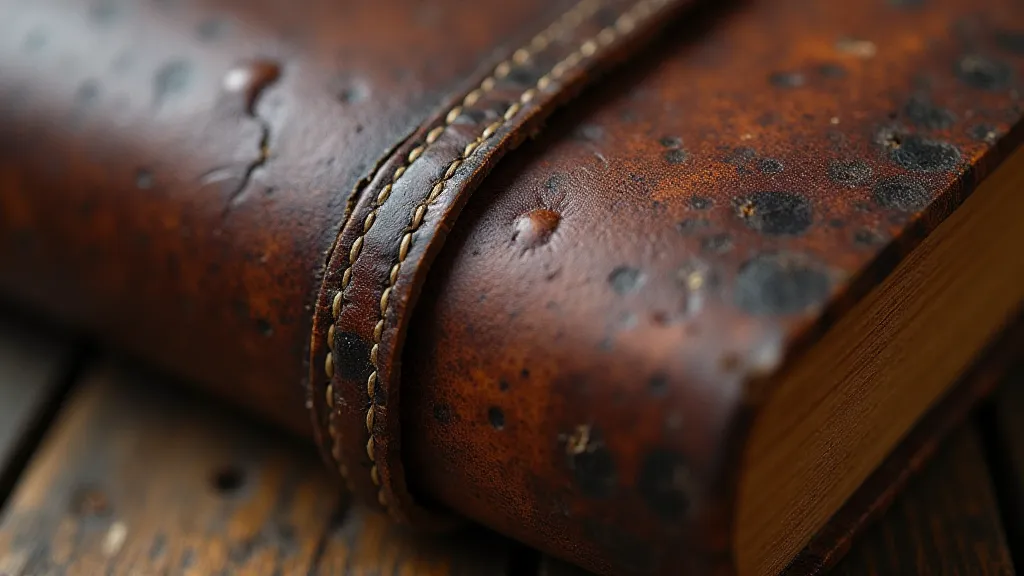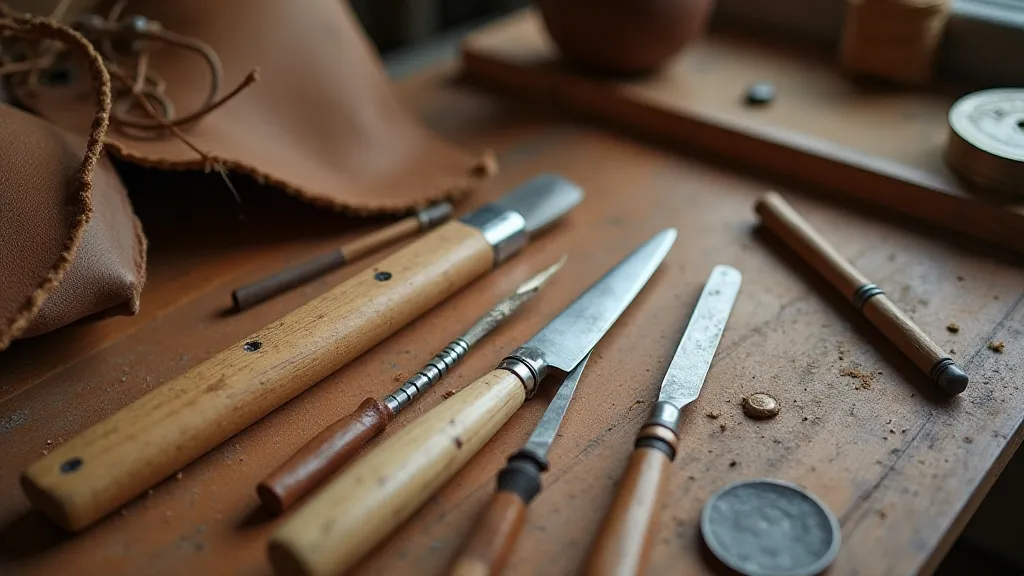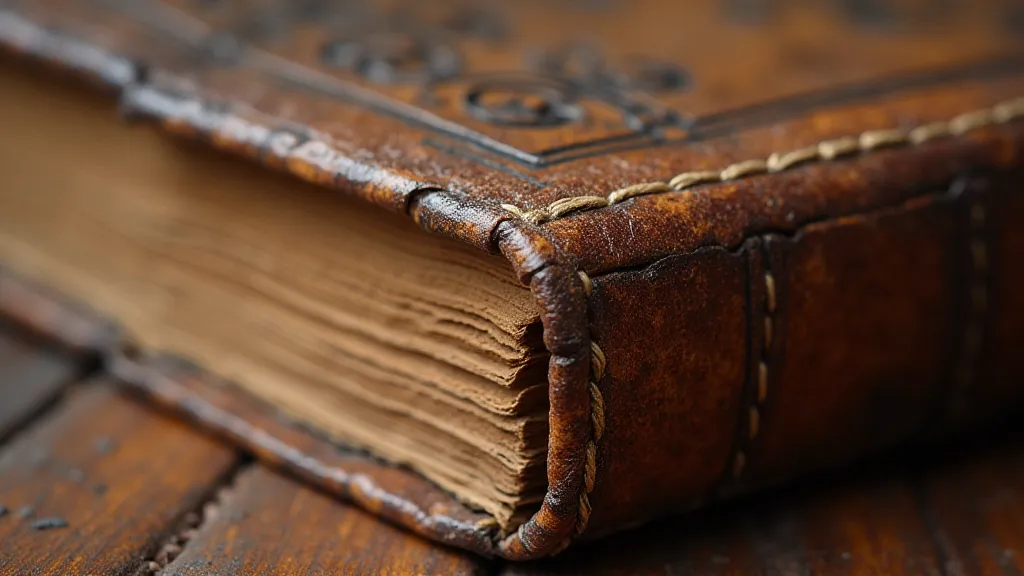The Stitch as Cartography: Mapping Narrative Through Binding Patterns
There's a peculiar intimacy one feels holding an antique accordion. Not just the physical sensation of its bellows, promising musical secrets, but the tangible connection to the hands that folded it, repaired it, cherished it. It's a feeling I often find mirrored in the leather bindings of ancient books – a silent dialogue across centuries, a whispered narrative embedded not just in the words, but in the meticulous craft of its creation. For the binder, the stitch isn’t just a way to hold pages together; it’s a form of cartography, a way to map the emotional landscape of the text itself.
My own fascination with this intersection began unexpectedly. I was tasked with cataloging a small collection of family heirlooms, most of which were faded letters and brittle photographs. But nestled amongst them was a small, leather-bound commonplace book – its spine cracked, its pages loose, but radiating an undeniable presence. As I carefully examined the stitching, a simple saddle stitch, it wasn’t just the mechanics of the binding that captivated me; it was the intentionality, the care etched into each hole and thread.

The Language of the Line
Historically, bookbinding was far more than a trade; it was an art form steeped in symbolism. Monks in medieval scriptoria weren’t just preserving knowledge; they were creating sacred objects. The stitching patterns chosen often reflected the content of the book, the patron's wishes, or the binder’s personal aesthetic. A dense, intricate stitch might be used for a weighty tome on philosophy, suggesting complexity and depth. A more open, flowing stitch, perhaps a long stitch or a link stitch, could be used for a book of poetry, evoking a sense of freedom and lyricism. The colour of the thread wasn't arbitrary either. Deep reds could signify passion or martyrdom, while blues might suggest loyalty or devotion. Understanding the visual language of thread—its density, color, and texture—is crucial to deciphering the narrative it helps convey; readers interested in delving deeper into this specific aspect might find “The Language of Thread: Expressing Emotion Through Stitch Density and Color” a valuable resource.
Consider the intricacies of a double link stitch, often found on luxurious bindings of the 16th and 17th centuries. The interwoven nature of the stitch visually represents connection and interdependence – fitting for a book on ethics or a collection of interconnected poems. Conversely, a simpler, more robust chain stitch, commonly used for practicality and durability, finds echoes in texts about resilience or practical knowledge. The visual “weight” of a stitch can directly counter or support the theme of the contained text. To simply secure the pages is only half the equation; the bind must participate in the narrative.
Beyond Function: The Binder's Signature
The rise of printing gradually diminished the role of the binder as a primary creator. The focus shifted from the crafting of the entire book to the preservation of the printed page. However, even in this shift, the binder's skill shone through. Skilled binders developed their own "signatures" in their stitching patterns – subtle variations in spacing, thread thickness, or stitch angle that became recognizable to other binders and scholars. Like a painter’s brushstroke, these details offered clues to the book’s provenance and history. For those looking to connect with the traditions of craftsmanship that underpinned this era, the article "Echoes of the Guild: Reconnecting with Historical Binding Methodologies" offers a deeper exploration.
Restoration work today often involves attempting to replicate these historical binding techniques, not just to preserve the book’s physical integrity, but also to honour the binder’s original intent. A seemingly minor correction—a single, carefully placed stitch—can speak volumes about the binder’s understanding of the original craft. The book’s just a collection of printed pages, but a carefully assembled and deliberately structured expression.
Tools of the Trade: A Binder's Palette
The equipment necessary for traditional leather stitching, surprisingly, isn’t extensive. The itself is quite manageable: strong waxed linen thread, awls of various sizes, a bone folder, a cutting mat, a sharp knife (such as a utility knife or X-Acto knife), and of course, the leather itself. The quality of the tools significantly impacts the final result. A dull awl can tear the leather, while coarse thread can create an unsightly finish.
s are invaluable for achieving consistent hole placement, especially for complex stitch patterns. Tracing patterns onto the parchment provides a template that can be reused for multiple bindings, ensuring uniformity and precision. The choice of leather itself—calfskin, goatskin, or even more exotic hides—influences the book’s aesthetic and durability.

Binding the Spine: A Labor of Love
s is a particularly delicate process. The leather must be properly prepared—cased, pared, and sometimes tooled—before the spine is attached. The spine serves as the structural backbone of the book, and its strength directly affects the book's longevity. Careful attention must be paid to the tension of the thread to prevent puckering or distortion. Each stitch must be firmly anchored to ensure the spine remains intact. The relationship between the spine and the narrative is a fascinating area of study; for a more in-depth look at this connection, explore "The Spine as Spine: A Narrative Relationship in Book Design".
There’s a peculiar satisfaction in feeling the spine take shape under one’s hands—the gradual transformation from a flat piece of leather to a graceful curve that perfectly complements the text within. It’s a process that demands patience, precision, and a deep respect for the craft. The challenges involved in restoring aging bindings and addressing fractured narratives are significant; those interested in learning more about approaches to book repair might find "Fractured Narratives: A Guide to Book Repair for the Intrepid Binder" a useful guide.
Restoration and Collecting: Echoes of the Past
For those interested in s or even starting a collection, understanding the history of binding techniques is essential. Recognizing the characteristics of different binding styles—the "signatures" of different binders—can provide invaluable insights into a book’s provenance and value. Examining the stitching pattern, the leather tooling, and the overall construction can reveal clues about its age, origin, and history.
Even a seemingly minor repair can tell a story – a testament to the book's journey through time. The faded ink of a previous owner’s inscription, the subtle wear patterns on the leather, the careful stitching of a replacement spine – all these details contribute to the book's unique character. Understanding the significance of these small details can truly unlock a deeper appreciation for a book’s history.

A Living Tradition
are not relics of a bygone era; they are a living tradition, continually evolving and adapting to new materials and techniques. While modern technology offers new possibilities for book production, the fundamental principles of hand-bound leather books remain unchanged. The quiet hum of the awl, the satisfying tug of the thread, the feel of the leather yielding beneath one’s touch – these are sensations that connect us to the generations of binders who have come before. The preservation of these skills and knowledge is paramount to ensuring that the art of bookbinding continues to thrive.
The stitch, more than just a means of binding pages, is a testament to the power of craft, the beauty of tradition, and the enduring human desire to create objects of lasting value. It's a cartography of the narrative itself, a silent language spoken through thread and leather, a map of the story contained within. The complexity and artistry involved in creating these objects highlights the deep connection between craft and storytelling.





